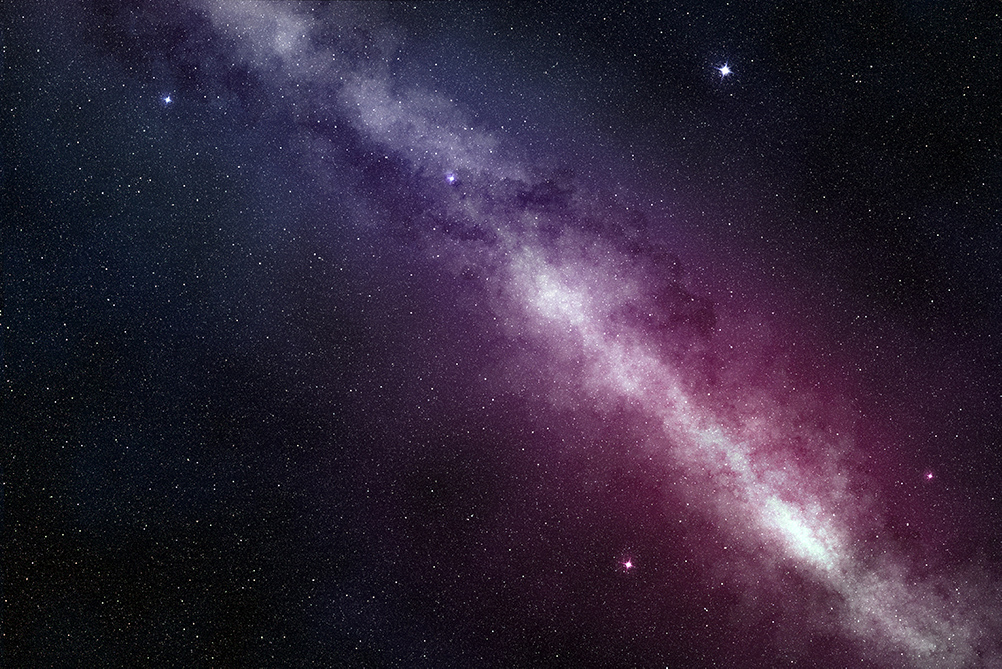Animal Study Suggests Deep Space Travel May Significantly Damage GI Function in Astronauts

Posted in News Release | Tagged gastrointestinal cancer, School of Medicine, space travel
MEDIA CONTACT
Karen Teber
km463@georgetown.edu
WASHINGTON (October 1, 2018) — Simulations with animal models meant to mirror galactic cosmic radiation exposure to astronauts are raising red flags for investigators at Georgetown University Medical Center (GUMC) about the health of astronauts during long voyages, such as to Mars.
Their most recent study, published in the Proceedings of the National Academy of Sciences of the United States of America (PNAS), suggests that deep space bombardment by galactic cosmic radiation (GCR) could significantly damage gastrointestinal (GI) tissue leading to long-term functional alterations. The study also raises concern about high risk of tumor development in the stomach and colon.
Their previous work has highlighted potential impairment to brain tissue, as well as accelerated aging, on long space trips due to the effect of energetic heavy ions, which don’t affect Earthlings due to the protective global magnetosphere.
“Heavy ions such as iron and silicon are damaging because of their greater mass compared to no-mass photons such as x-rays and gamma (g)-rays prevalent on Earth, as well as low mass protons in outer space,” says the study’s senior investigator, Kamal Datta, MD, an associate professor in the Department of Biochemistry and a project leader of the NASA Specialized Center of Research (NSCOR) at GUMC.
“With the current shielding technology, it is difficult to protect astronauts from the adverse effects of heavy ion radiation. Although there may be a way to use medicines to counter these effects, no such agent has been developed yet,” says Datta, also a member of Georgetown Lombardi Comprehensive Cancer Center. “While short trips, like the times astronauts traveled to the Moon, may not expose them to this level of damage, the real concern is lasting injury from a long trip, such as a Mars or other deep space missions which would be much longer” he says.
The GI tract is a self-renewing tissue with continuous cell division/proliferation, the researchers say. The mucosal (top) layer of cells is replaced every three to five days through coordinated migration of new cells from the bottom of a flask-shaped structure called the crypt toward the lumen of the gut. “Any disturbance of this replacement mechanism leads to malfunctioning of physiologic processes such as nutrient absorption and starts pathologic processes such as cancer,” says co-author Georgetown’s Albert Fornace Jr., MD, director of the NSCOR.
To investigate the effect of heavy ions on the GI tract, the scientists used mouse small intestine as a model system. Mice were exposed to a low dose of iron radiation at the NASA Space Radiation Laboratory (NSRL) in Brookhaven National Laboratory on Long Island, New York, and the animals were then examined at Georgetown.
Researchers compared the group of mice that received heavy ions to mice exposed to gamma rays, which are comparable to X-rays, and to a third, unexposed control group. The scientists found that intestinal cells in the heavy ion group did not adequately absorb nutrients and that they formed cancerous polyps.
Additionally, there was evidence that iron radiation induced DNA damage that increased the number of senescent cells. Senescent cells are incapable of normal cell division but they are not “quiet,” says Datta.
“They generate oxidative stress and inflammatory molecules that induce more damage. This greatly affected migration of cells that are needed to replace the intestinal lining, which slowed down GI functioning,” he says.
Even though a very low dose was delivered over the equivalent of a months-long period in deep space, the effects of heavy ion radiation appeared to be permanent, says Fornace.
“We have documented the effects of deep space radiation on some vital organs, but we believe that similar damage responses may occur in many organs,” says Datta. “It is important to understand these effects in advance so we can do everything we can to protect our future space travelers.”
###
Study co-authors also include Santosh Kumar, PhD, a postdoctoral fellow; and Shubhankar Suman, PhD, an assistant professor, both in the department of oncology at Georgetown University Medical Center.
Funding for the study came from NASA grants (NNX13AD58G and NNX15A121G).
About Georgetown Lombardi Comprehensive Cancer Center
Georgetown Lombardi Comprehensive Cancer Center is designated by the National Cancer Institute as a comprehensive cancer center — the only cancer center of its kind in the Washington, D.C. area. A part of Georgetown University Medical Center and MedStar Georgetown University Hospital, Georgetown Lombardi seeks to improve the diagnosis, treatment, and prevention of cancer through innovative basic and clinical research, patient care, community education and outreach, and the training of cancer specialists of the future. Connect with Georgetown Lombardi on Facebook (Facebook.com/GeorgetownLombardi) and Twitter (@LombardiCancer).
About Georgetown University Medical Center
Georgetown University Medical Center (GUMC) is an internationally recognized academic medical center with a three-part mission of research, teaching and patient care (through MedStar Health). GUMC’s mission is carried out with a strong emphasis on public service and a dedication to the Catholic, Jesuit principle of cura personalis — or “care of the whole person.” The Medical Center includes the School of Medicine and the School of Nursing & Health Studies, both nationally ranked; Georgetown Lombardi Comprehensive Cancer Center, designated as a comprehensive cancer center by the National Cancer Institute; and the Biomedical Graduate Research Organization, which accounts for the majority of externally funded research at GUMC including a Clinical and Translational Science Award from the National Institutes of Health. Connect with GUMC on Facebook (Facebook.com/GUMCUpdate) and Twitter (@gumedcenter). Connect with Georgetown University School of Medicine on Facebook (Facebook.com/somgeorgetown), Twitter (@gumedicine) and Instagram (@GeorgetownMedicine).
